Cultural Tamilnadu
Cultural Tamilnadu
To avail the below mentioned package please click

Day 1
On the way to Mahabalipuram, visit Dakshinachitra - an amazing place to visit, as various kinds of traditional houses have been transported to Chennai from interior parts of Tamil Nadu, Andhra Pradesh and Kerala and rebuilt here piece by piece.
Mahabalipuram, a coastal town 64 kms from Chennai is a sculptor's delight. Mahabalipuram, is now known as Mamallapuram. It is believed to have been called Mahabalipuram after the great king Mahabali, who was blessed by Lord Vishnu in his Vamana Avatar. It is known as Mamallapuram after the Pallava king Narasimha varman I, who bore the title of Mamallan (great wrestler). The major contributions were by the Pallava rulers Narasimha Varman & Rajasimhan. The five rathas are mini shrines which are carved out of one rock constructed in the form of chariots. The Dharmaraja, Bhima, Arjuna & Draupadi rathams have been carved out of one single boulder. The shore temple is located at the sea shore and has withstood the ravages of the sea. Unlike the rock cut structures in Mamallapuam, this is a structural temple, built by Rajasimha out of hard blackish leptynite. This shrine is dedicated to both Siva and Vishnu. Overnight stay at Mahabalipuram.
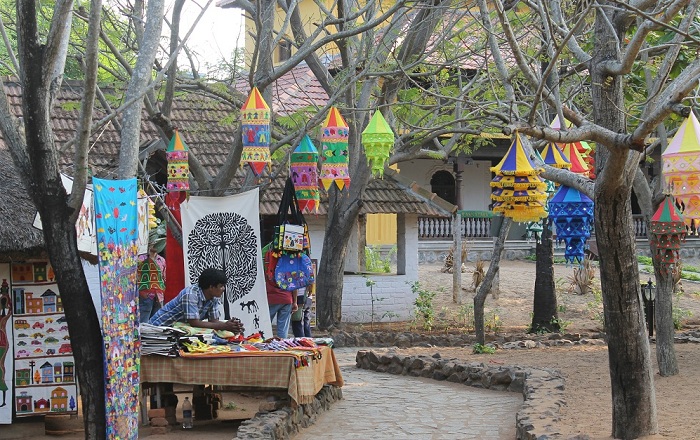
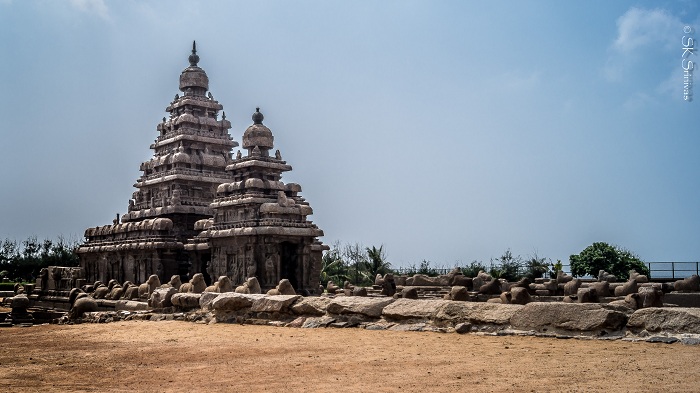
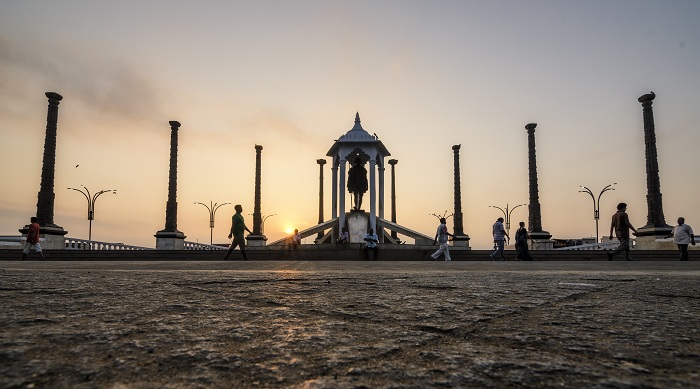
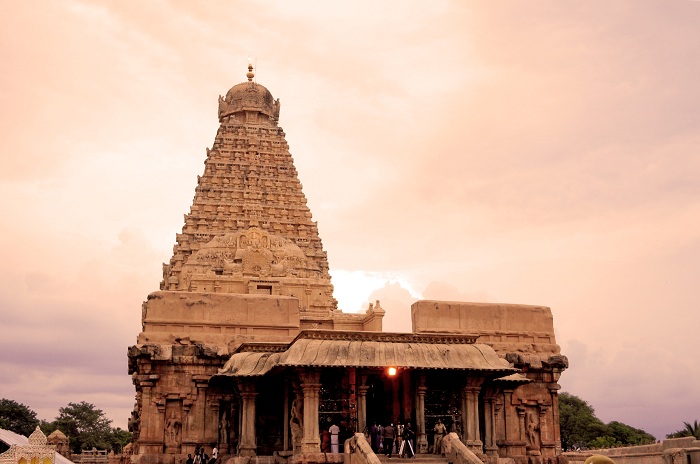
Day 2
After check-out from Mahabalipuram, drive via Pondicherry to Kumbakonam.
Often referred to as "A little piece of Medieval France in India" and "...
a sleepy provincial French town", Pondicherry has managed to retain its
French aura. From its delightful restaurants offering French cuisine and
streets bearing French names, Pondicherry's French connection is very much
alive - yet, very subtle. Visit Aurobindo Ashram, Auroville and the beach if
time permits. After lunch, drive to Kumbakonam - the temple town which has
innumerable temples, some are ancient ones too belonging to 7th and 8th
Century.
The nine planets temples called Navagrahas are also close to
Kumbakonam. It is not an easy task to visit all the temples of Kumbakonam
even if you stay there for a month. You can visit Suryanar Koil which is the
temple for Sun God but also has shrines of other planets. The Mahamaham
Festival which is celebrated once in twelve years attracts several million
people who will have a holy dip at the temple tank. Overnight stay at
Kumbakonam.
Day 3
After breakfast drive to Karaikudi via Tanjore. Enroute, visit UNESCO Heritage sites - Darasuram which was built in the 12th Century, Gangaikonda cholapuram and Tanjore Brihadeeswarar Temple. Karaikudi is a city and municipality in Sivaganga district in the Indian state of Tamil Nadu. It is part of the area commonly referred to as "Chettinad". Karaikudi is declared a heritage town by the Government of Tamil Nadu, on account of the palatial houses built with limestone called karai veedu. You can choose to stay in a Chettinad Palace house which is now converted into a resort. Chettinad is famous for its Non-Vegetarian dishes and if interested you can feast on them. Overnight stay at Karaikudi (Chettinadu).
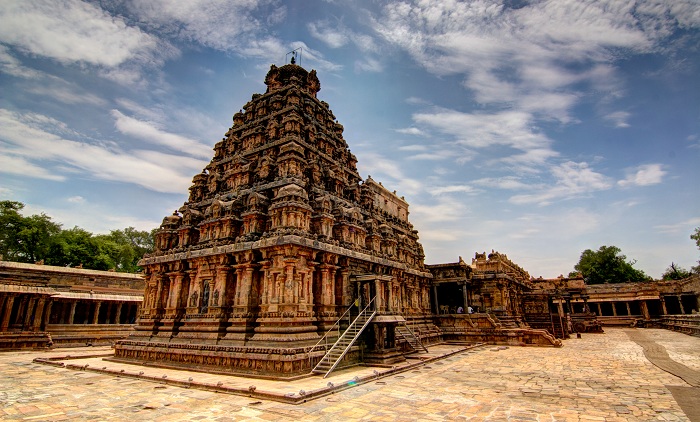
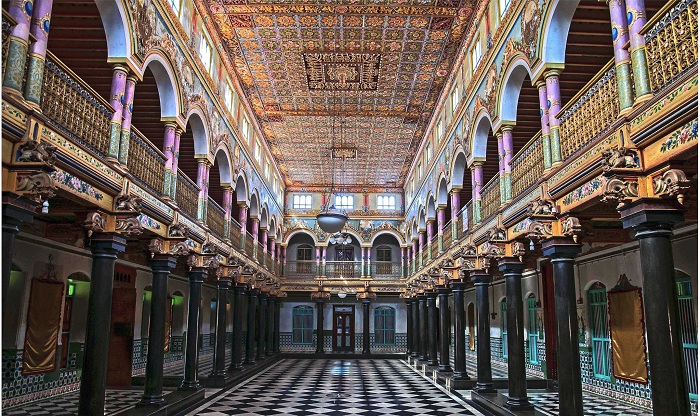
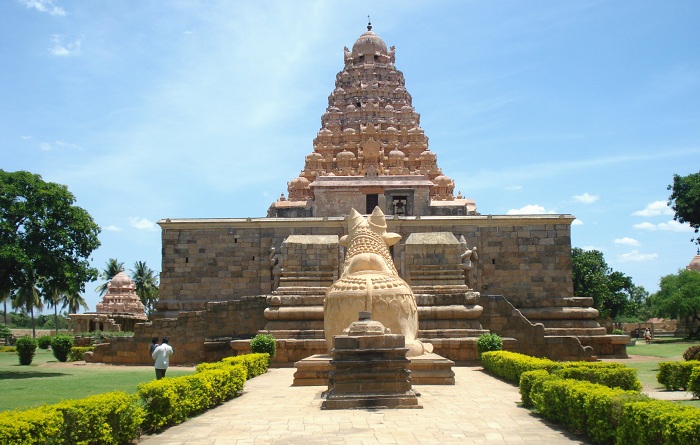
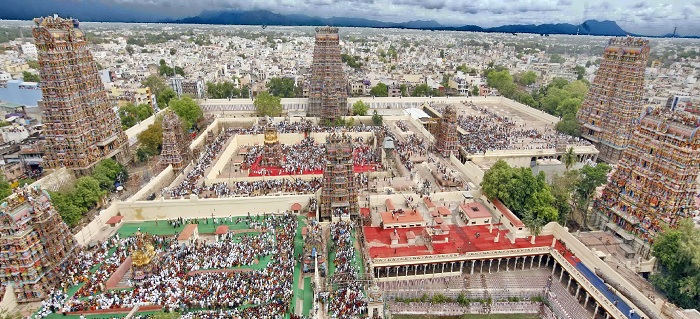
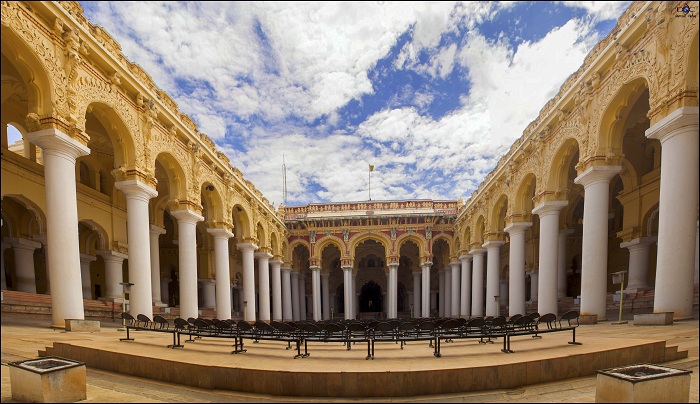
Day 4
After breakfast from Karaikudi, drive to Madurai.
Madurai is one of South India's great temple towns. Madurai is synonymous
with the celebrated Meenakshi Temple. Situated on the banks of river Vaigai,
Madurai has a rich cultural heritage passed on from the great Tamil era more
than 2500 years old. Madurai was an important cultural and commercial centre
even as early as 550 AD. It was the capital city for the great Pandya kings.
The Pandyan King Sadayavarman Kulasekaran built a great temple and created a
lotus shaped city around the temple. On the day the city was to be named, as
Lord shiva blessed the land and its people, divine nectar (Madhu) was
showered on the city from his matted locks. This city was henceforth known
as Madhurapuri. Madurai is famous for Jasmine Flowers.
You can choose to visit Meenakshi Amman Temple in the night to witness the
“Night Ceremony” (each night the image of Shiva in the form of Sundareswarar
is carried from his shrine to join his consort Parvathi in the form of
Meenakshi at hers, in another part of the temple. This ceremony attracts
several people and it is not to be missed if travelling to Madurai. Other
attractions of Madurai include Thirumalai Nayakkar Palace and a walk on the
streets of the city.
Overnight stay at Madurai.
Day 5
After breakfast at Madurai hotel, check out and drive back to Chennai. It takes about 9 hrs by road. Alternatively, you can take a flight from Madurai to your next destination/home.
To avail the below mentioned package please click

Day 1
Chennai - Mahabalipuram
On arrival at Chennai, pick up and drive to Mahabalipuram in an
air-conditioned vehicle. Enroute visit Dakshina Chitra, a Heritage Museum.
You can visit Shore Temple, Pancha Rathas, Descent of the Ganges monuments
in Mahabalipuram and spend some time in the beach. Overnight in
Mahabalipuram Resort.
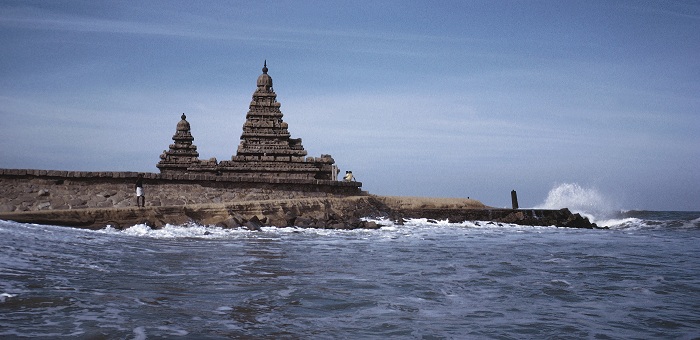

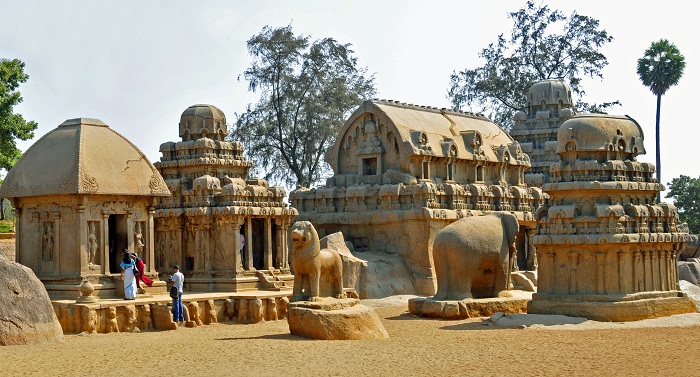
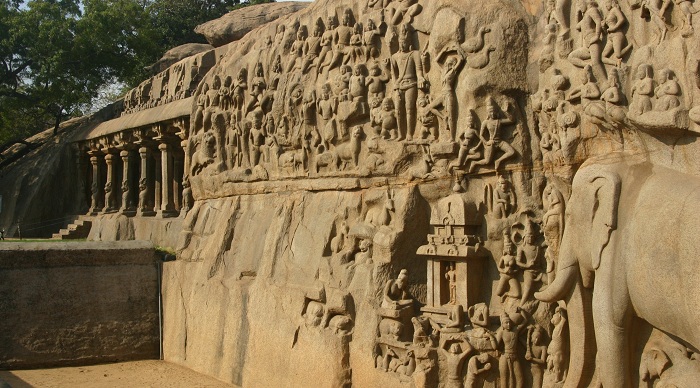

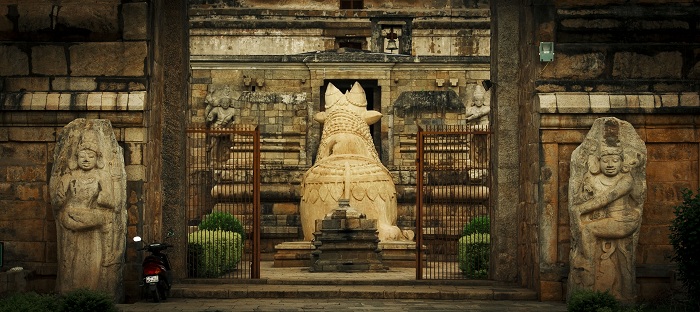

Day 2
Mahabalipuram - Kumbakonam
Breakfast at the Mahabalipuram Resort. Check out and drive to Kumbakonam. Enroute, visit Chidambaram Natarajar Temple dedicated to Lord Shiva. Chidambara Rahasiyam, which literally means secret of Chidambaram, is a belief of devotees that Lord Shiva and his consort Parvathi are present physically here but invisible to most people. Chidambaram is one of the Panchabootha Sthalas, where the Lord is worshipped in his manifestation as sky or Aagayam ("pancha" – meaning five, bootha – meaning the elements: earth, water, fire, wind and space and "sthala" meaning location).
In Kumbakonam which is the temple town, you can choose to visit Heritage sites temples Gangaikonda Cholapuram and Darasuram. If time permits, you can visit a few temples from the Navagraha circuit (Nine planets temples). Overnight in Kumbakonam.
Day 3
Kumbakonam
After breakfast, you can begin your Kumbakonam temple visits – the following are some of the important ones and you can choose to cover at least a few of them. Kasi Viswanathar temple which is close to famous Mahamaham tank, Adi Kumbeswara Swami temple, Nageswaran temple, Chakrapani temple, Sarangapani temple, Uppiliappan temple, Mahalingaswamy temple, Ramaswamy temple, Suryanar temple, Kanjanur Sukran temple, Naganathaswamy temple, Thirunageswaram Ragu temple.
Overnight in Kumbakonam.
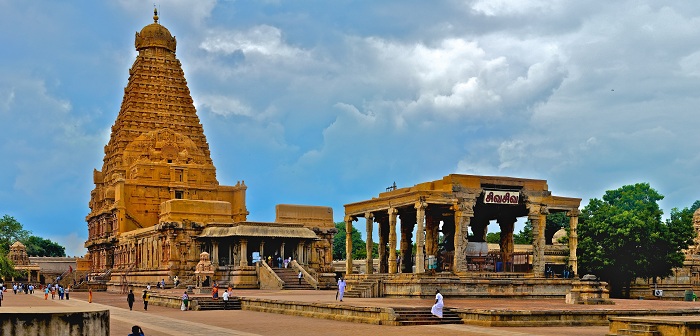
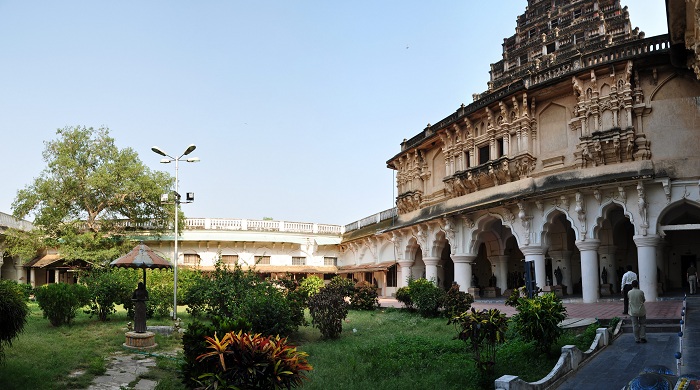
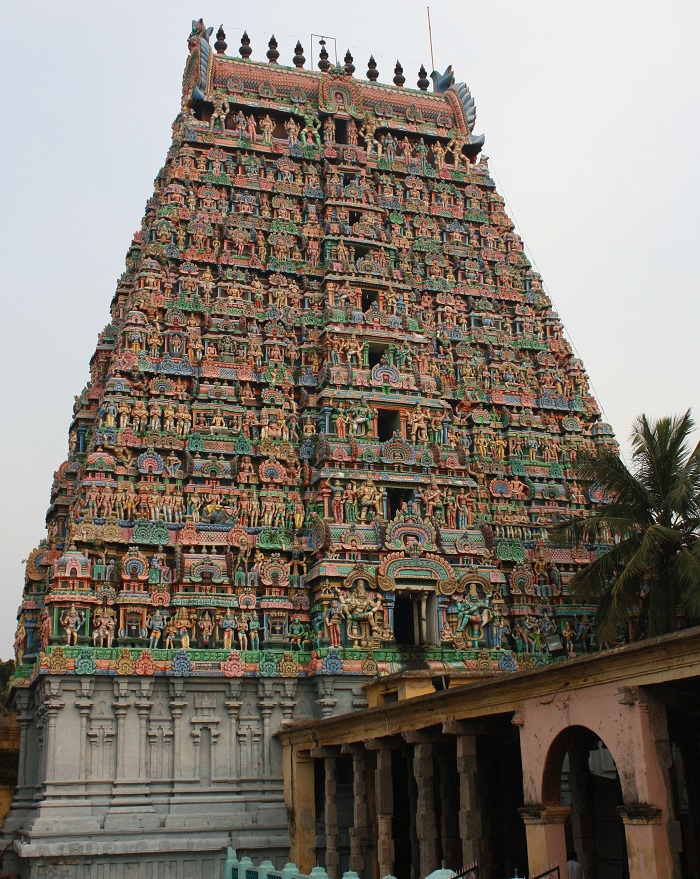
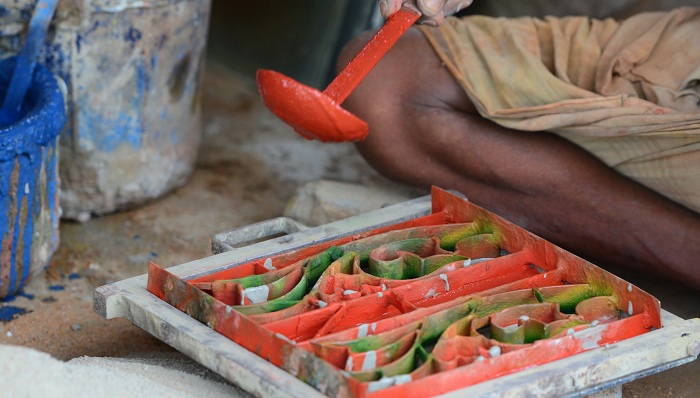
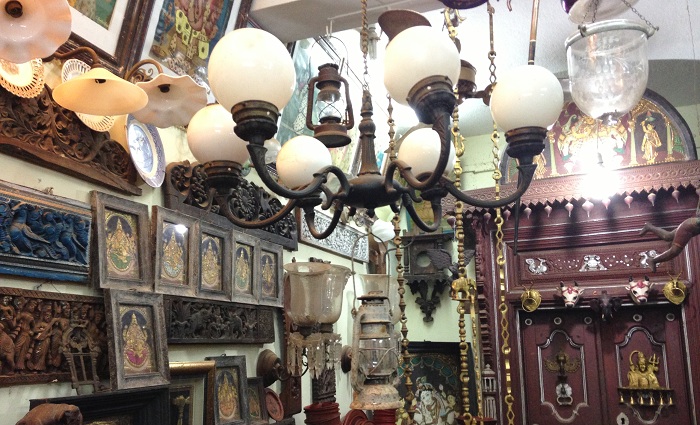
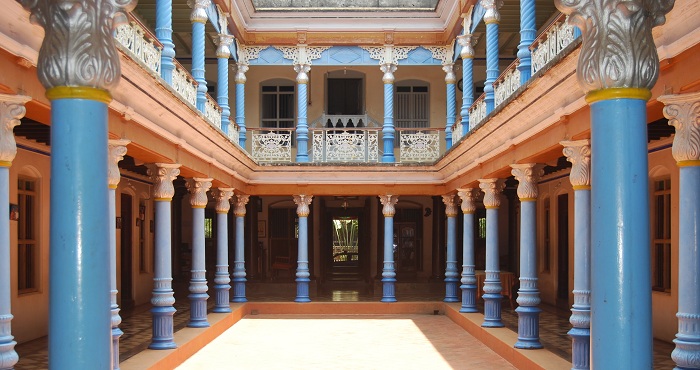
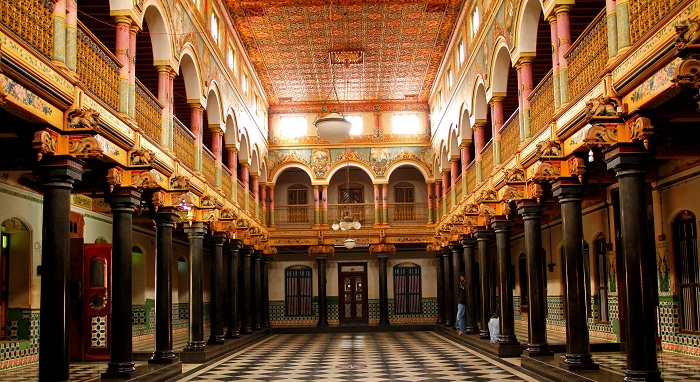
Day 4
Kumbakonam - Karaikudi
After breakfast, you can check out of Kumbakonam hotel and drive to Karaikudi. Enroute, you can visit Thanjavur Brihadeeswarar Temple (also called Tanjore Big Temple) which is also a part of the UNESCO Heritage Sites. This temple is over 1000 years old and is one of the largest temples in the country. Its tower is a whopping 216 feet height making it also the tallest in the country.
You can reach Karaikudi (also called Chettinad) and try out Chettinad Non-Vegetarian cuisines which are world famous in one of the Chettinad Palaces which have become hotels/resorts now. You can visit palatial houses of Chettinad, Chettinad Museum and also Athangudi.
Attangudi or Athangudi
Athangudi is a village situated in Chettinad, which is popular for handmade terracotta tiles. These tiles are sun-dried and patterned beautifully for giving the desired texture. The colourful tiles here are mainly designed using sand, cement, belly jelly and synthetic oxides. These tiles are generally available in flora and fauna designs and are famous for their dark, white and earthy hues. All these tiles are designed in the Athangudi tile factory and are used mainly in the Chettiars ancestral houses.
Chettinadu Museum
UNESCO had offered to set up a 'Chettinad Heritage Museum' in Sivaganga district of Tamil Nadu, recognizing the unique style of architecture in the region. Chettinad region rose to fame in the 19th century as home to successful traders and financiers who spread their wings throughout southeast Asia. They built palatial houses, often over raised mounds, with elegant halls and huge courtyards.
Chettinad Mansion
Chettinad is full of palatial homes so big their entrances are on one street and exits on a parallel street. In a typical Chettinad mansion, a sweeping path leads to the front porch, called thinnai. Then comes a large veranda leading into an open space that was used for weddings and other celebrations. A narrow passage from there leads to the next veranda and then another. Along the verandas are the mansion's residential and store rooms (over 100 in many homes). Some of the mansions have long rooms that run parallel to the courtyard; these can seat a thousand people.
Overnight in Chettinad (Karaikudi).
Day 5
Karaikudi - Madurai
After breakfast at Chettinad, check out and drive to Madurai. In Madurai, you can see the following:
Thirumalai Nayakkar Palace or Mahal:
King Thirumalai Nayakkar ruled Madurai between A.D 1623 and 1659 and was the most notable of the thirteen Madurai Nayak rulers of the 17th century. This Palace is famous for its huge pillars while the courtyard and the dancing hall are the major attractions to many.
Koodal Azhagar Temple
This temple dedicated to the Hindu god Vishnu is constructed in the Dravidian style of architecture. The temple is glorified in the Divya Prabandha, the early medieval Tamil canon of the Azhwar saints from the 6th-9th centuries AD. It is one of the 108 Divyadesam dedicated to Vishnu, who is worshipped as Koodal Azhagar and his consort Lakshmi as Maragathavalli.
Meenakshi Amman Temple
It is a historic Hindu temple located on the southern bank of the Vaigai River in the temple city of Madurai, Tamil Nadu, India. It is dedicated to Parvathi, known as Meenakshi, and her consort, Shiva, here named Sundareswarar. The temple forms the heart and lifeline of the 2,500- year-old city of Madurai and is a significant symbol for the Tamil people, mentioned since antiquity in Tamil literature.
Overnight stay in Madurai.
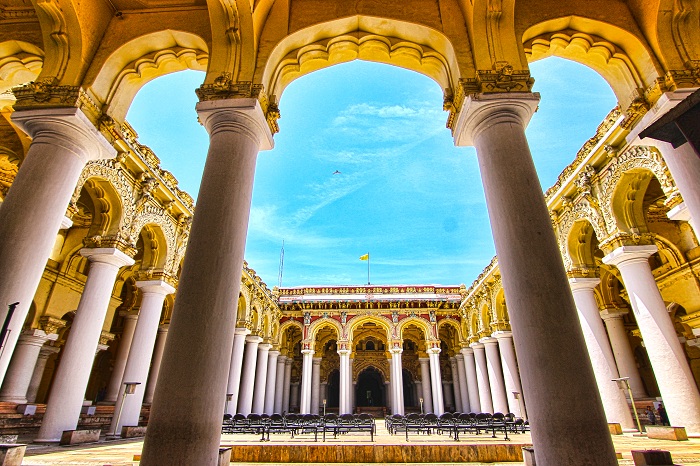
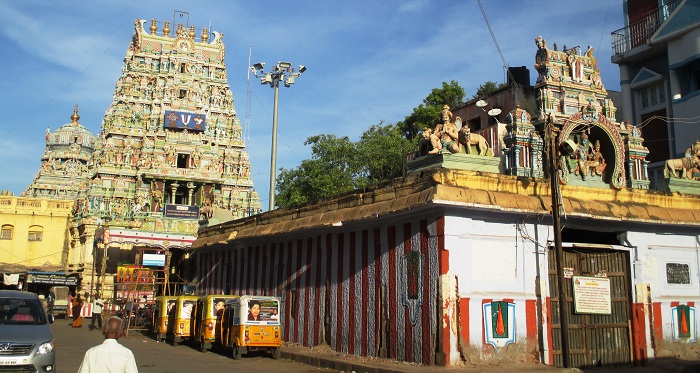

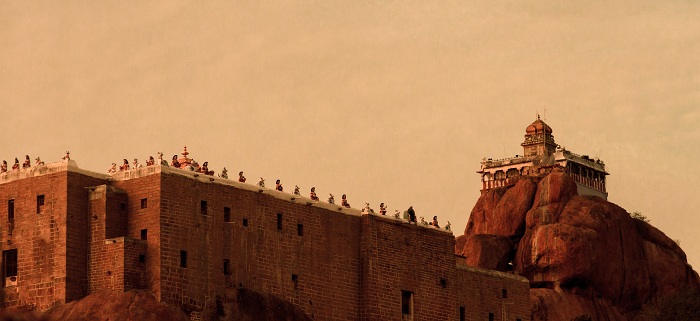

Day 6
Madurai to Chennai:
Breakfast at the hotel in Madurai and check out to drive to Chennai via Trichy. In Trichy, you can see the following:
Tiruchirappalli Rockfort
It is a historic fortification and temple complex built on an ancient rock. It is constructed on a 83 metres (272 ft) high rock that may date to over one billion years ago. There are two Hindu temples inside, the Ucchi Pillayar Temple, Rockfort and the Thayumanaswami Temple, Rockfort.
Our Lady of Lourdes Church
The Roman Catholic Basilica is devoted to Our Lady of Lourdes. The CAUVERY with its ceaseless and bounteous flow and the ROCKFORT with its timeless history seem to converge imperceptibly in the divine precincts of the hallowed CHURCH OF OUR LADY OF LOURDES at the heart of ST.JOSEPH'S COLLEGE. St.Joseph's College church completed in A.D. 1895 JESUIT FATHERS presents a fascinating study of contrasting styles for a connoisseur of architecture as it is a replica of our Lady of Lourdes church - France.
Reach Chennai in the late evening for your flight back home in the night.
 Fulcrum Tours & Travels P Ltd.,
Fulcrum Tours & Travels P Ltd.,